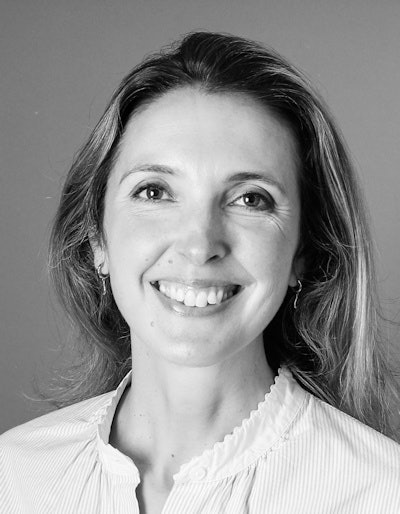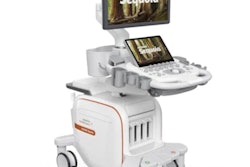
Imaging's role in fighting climate change will come under the spotlight at ECR 2023. Ahead of the congress, keynote speaker Dr. Sarah Sheard discusses the environmental evidence and data and gives practical tips on how to reduce carbon emissions.
Sheard, a consultant cardiothoracic radiologist at Imperial College Healthcare NHS Trust in London, has a personal interest in climate change and felt frustrated that institutions weren't taking it seriously, noting that there was a blind spot in the workplace over gestures prioritized at home such as recycling and energy saving. However, there has been a culture shift toward sustainability in U.K. hospitals over the past five years, she concedes.
"There is varying interest in climate change among radiologists. One of the biggest challenges is that we just don't speak the language so part of my session will be dedicated to basic climate science for radiologists which will include terminology and methodology on how to measure emissions, before looking at how to implement greener radiology," she noted.
 Sources of emissions from healthcare in the U.K. Graphic courtesy of National Health Service (NHS) England
Sources of emissions from healthcare in the U.K. Graphic courtesy of National Health Service (NHS) EnglandCT's carbon footprint
Her work on sustainable imaging was sparked when the U.K. rolled out a net zero emissions target, triggering the creation of an 'interest group' by a nurse and a medical physicist, according to Sheard, whose ECR 2023 plenary lecture begins at 9.30 am on Thursday 2 March.
With the collaboration of a full-time intern from Imperial business school, the group's most recent work has involved measuring CT's carbon footprint and will feature as a scientific poster at ECR 2023. She hopes ECR delegates will leave the congress with ideas about what they could actively do and a sense of how imaging will look in the future with net zero emissions
The group's research revealed that the annual carbon footprint from using one CT scanner is the equivalent of that for 27 U.K. households over a year, namely 74,883 kg of CO2 equivalent (CO2e) emissions, with one CT scan generating 3.6 kg of CO2e.
The measurement of the footprint included calculating equivalent emissions resulting from the average journey a CT patient and staff members made to the department, and other elements such as emissions from the electricity used for the scan, from energy used to heat and cool the CT room, and also included emissions from manufacturing and installation of the CT machine broken down per patient. However, the team did not include emissions made from generating the images after the scan, postprocessing, and storing and accessing the images on PACS, which would have added layers of complexity. CO2e emissions from these later steps in the CT chain will be calculated in a future project and the team is currently gathering the required data.
In another step financed by the Imperial Research Fund, all hospital CT scanners are having meters installed on them over the coming months to compare real energy consumption and emissions with data provided by the manufacturers. Emissions will be calculated using accurate data on the carbon intensity of electricity generation in the U.K., which is currently a mixture of renewables and gas. Public funding could ensure this meter system rolls out in the longer term, Sheard explained.
The move follows on from smart software implemented last summer that shuts down computers when they are not in action, she noted.
Furthermore, the team has built a model to apply to MRI scanners to establish CO2 emissions, and also to calculate CO2e in theoretical scenarios such as patients undergoing scans in the community which would imply lower emissions from patient journeys.
"This will impact how we think about and implement change in care delivery," she said.
Burns bin
Another significant initiative, the radiographers' waste stream project, involved many partners, including the hospital waste manager, the waste contractors who dispose of clinical waste, local government responsible for domestic recycling, contrast suppliers, and hospital staff.
The project aimed to measure the environmental impact of CO2e emissions from incorrect use of the "sharps bin" by the radiography and cleaning staff at Hammersmith and St Mary's hospitals and to work out what reduction could be made if the nonsharp waste that often ended up in this bin could be disposed of less intensively than genuine "sharps" such as needles, which require incineration, a process that has a greater carbon footprint and is more expensive than domestic recycling.
 Posters about contrast recycling remind staff to be waste conscious. Artwork courtesy of Sam Taylor.
Posters about contrast recycling remind staff to be waste conscious. Artwork courtesy of Sam Taylor.The project was two-pronged, involving several days of auditing for emissions calculations as well as practice change such as contrast recovery: Remains of contrast left in bottles were returned to the manufacturers, then these empty bottles had their labels removed, they were rinsed, and then they were put in the cheaper domestic plastic recycling stream, along with other single-use nonsharp items, reducing the final amount of items being incinerated as "sharps."
"Simply using the burns bins correctly and recycling excess contrast as well as their containers provides an estimated annual saving of just under 10,000 pounds [11,300 euros] and a reduction of 20,513 kg of CO2 emitted per year -- equating to 13 flights to Perth," she said.
Of course, staff still need to be trained and reminded to maintain greener practices to consolidate a true culture shift. There is a need for "trash police," noted Sheard, who pointed to how well-meaning cleaners removing awareness posters between shifts or missed training and communication about bin use meant that there was still variation in practice among staff.
"Everything has to line up. If one link is missing in training or resources then the whole chain falls," she added.
Here and now
 Dr. Sarah Sheard.
Dr. Sarah Sheard.So what can radiologists and radiographers do right now that will have an immediate impact on the environment?
Departments should start by looking at the energy required to heat and ventilate rooms, sustainable disposal of single-use plastic items, and reducing patient journeys -- these three areas being the biggest emissions contributors, according to Sheard.
"We should at least be asking whether heating and cooling systems for certain rooms can be reduced overnight," she noted. "Strategies that reduce emissions ultimately reduce electricity consumption and save hospitals money. Also, we don't use sleep mode enough. Machine manufacturers need to ensure we know how to use it on our modalities."
Other small changes such as remembering to switch off lights and reducing the air conditioning in an unused room, for example, could make a big difference, as could ensuring that the hospital purchases ultrasound gel in recyclable bottles, which are then actually recycled. Also, she advocated not opening preprepared packs until syringes are really needed rather than in advance which often results in no longer sterile syringes being thrown away.
To limit patient journeys, she described how care delivery needed to be rethought: Patients are sometimes scheduled for different tests on different days, or similar tests in different hospitals, necessitating several potentially unnecessary trips to centers in the same week, she noted. Patient bundling, implemented during the pandemic, could reduce emissions but this would require careful scheduling, while better information sharing would obviate test duplication.
"The greenest scan is the one you don't need to have," she noted.
Finding allies
She noted that both industry and hospital management were keen to work with radiology staff to establish greener technologies and practice, and the only initial price tag for sustainable radiology was the time it took to change habits.
"First, don't be put off by the complexity and size of the task. Second, network: find your allies among staff and speak to the 'powers that be' in senior management. Their target of net zero emissions means that we already have their ear and they will be helpful. Third, don't let 'perfect' be the enemy of 'good'. Do the things you think are worthwhile," Sheard said.



















